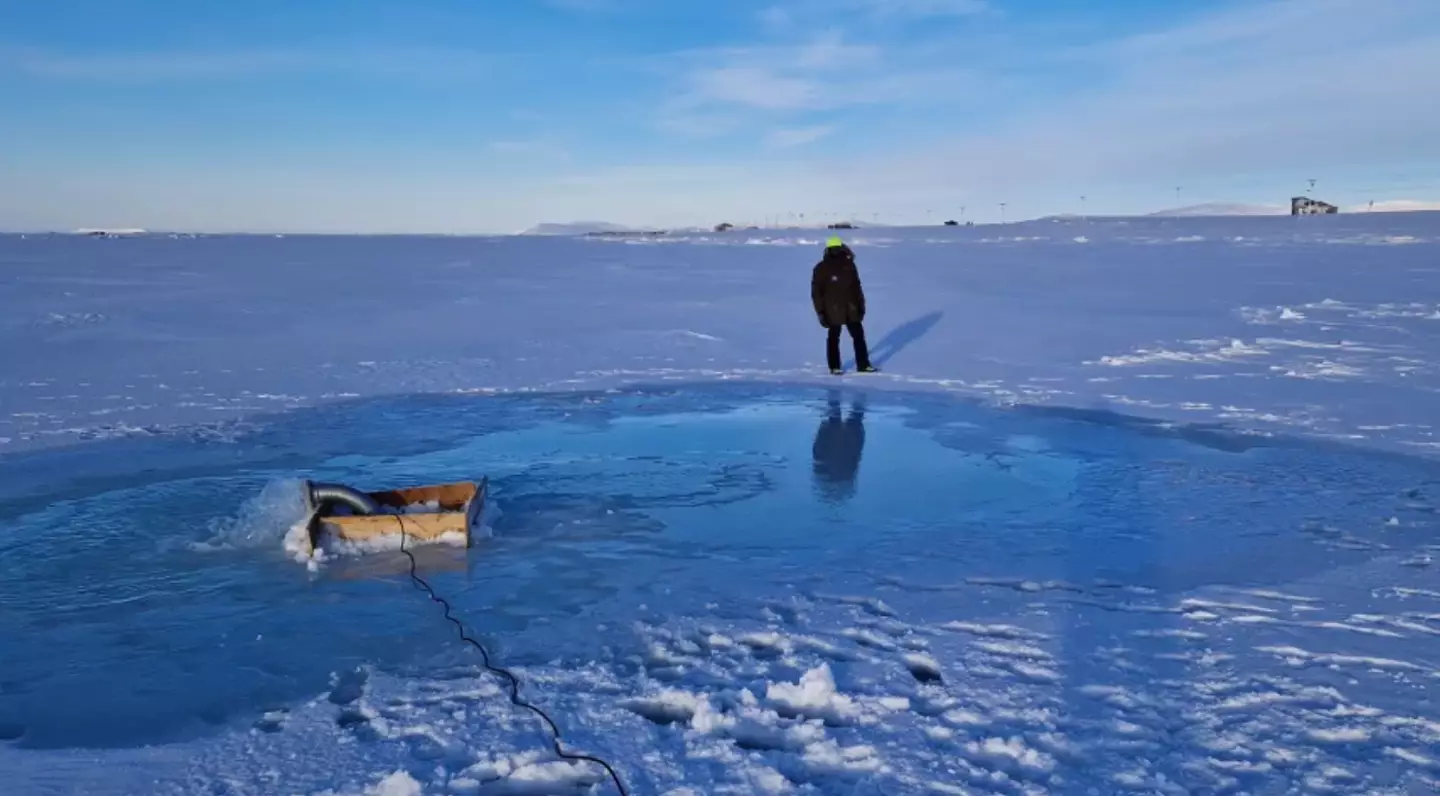
Over recent decades, the Arctic has warmed as a result of climate change and it’s had devastating affects on the area – and the rest of the world.
From more draughts and more severe storms, to rising sea levels and an increase in some diseases such as malaria, global warming is wreaking havoc on our planet.
The Arctic is one of the worst hit areas, with its ice shrinking by 12.2 percent per decade, NASA reports.

The Arctic loses over 12 per cent of its ice each decade (Sebnem Coskun/Anadolu via Getty Images)
As to how they’ve been doing this, UK start-up Real Ice has been drilling holes through the sea ice to pump out the seawater below and freeze it on the surface, CNN explained.
The group started tests in Cambridge Bay in Canada in January this year and following tests conducted last month, it’s been found that four inches of ice has been formed so far.
It’s still ‘early days’ though, says Shaun Fitzgerald, director of the Centre for Climate Repair at the University of Cambridge.
“I am optimistic, but we need more experiments and more data,” he added.
As per Real Ice’s website, the water that’s being pumped onto the ice is ‘delivered by an underwater drone with a hydrogen fuel cell energy system’.
These drones then melt holes in the ice from below using heated drills.

Real Ice has been drilling into the Arctic floor to get seawater to come to the surface (Real Ice)
The drones would be deployed carefully to avoid animal migration paths and ship lanes, noted Andrea Ceccolini, co-CEO of Real Ice.
While there’s been some positive outcomes so far, other experts have expressed concerns about the plans.
Liz Bagshaw, associate professor in polar environmental change at the University of Bristol, labeled the plan as ‘extremely questionable’.
“Such interventions are morally dubious at best, and at worst, ethically irresponsible,” she added to CNN.
Jennifer Francis, a senior scientist at Woodwell Climate Research Center, also said that she has ‘serious doubts’ about it all and if it will make a real impact on ice levels in the Arctic.

There are fears that the Arctic will lose most of its ice by the early 2030s (Sebnem Coskun/Anadolu via Getty Images)
It’s also feared that it will have ‘grave unforeseen consequences’ – one being changes to marine environment.
A 2024 report titled ‘Safeguarding the polar regions from dangerous geoengineering’ argued that this could ’cause severe environmental damage’.
In regards to how damage caused by climate change can be avoided, the study says this will be ‘best achieved by mitigating the cause of climate harm through immediate, rapid and deep decarbonization, rather than attempting interventions in fragile polar ecosystems’.


